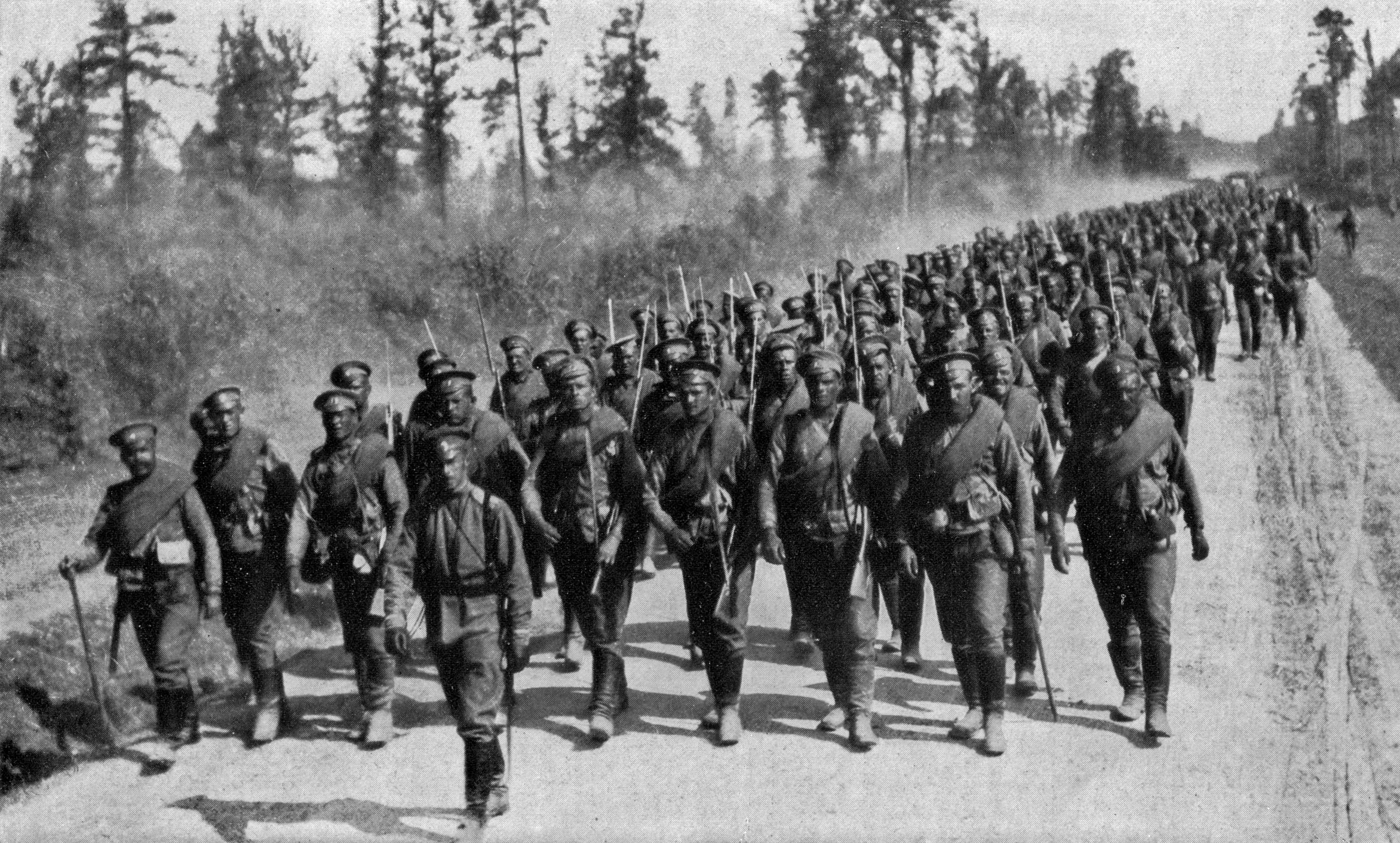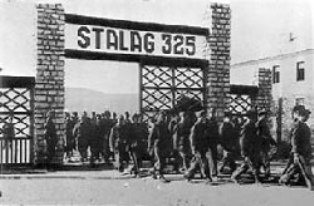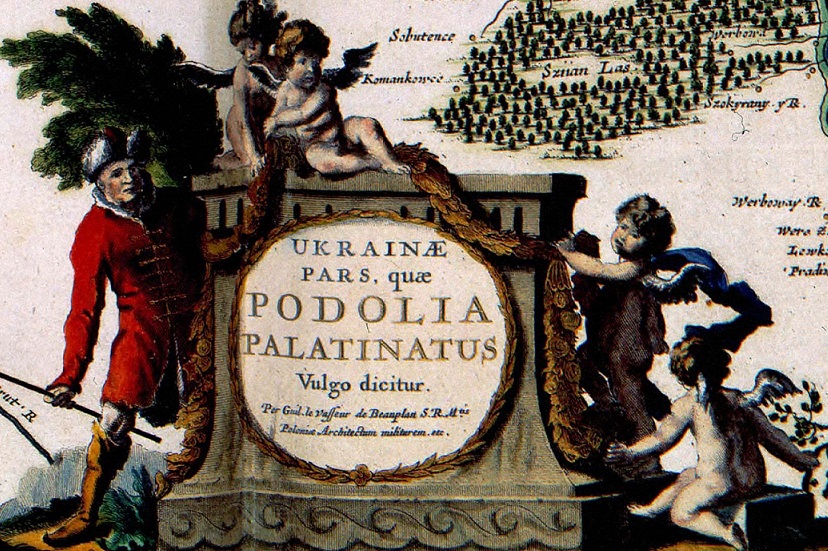|
Rovno Offensive
The Rovno offensive — the operation of the Austro-Hungarian Northern armies against the armies of the Russian Southwestern Front — the so-called campaign on Rovno, or Lutsk-Rovno offensive operation. The purpose of the offensive was the liberation of Eastern Galicia, but by the end of the operation, a small part of Eastern Galicia was still held by the Russian Imperial Army. Background At the end of August 1915, the Austro-Hungarian command plans a major offensive on Rovno by the forces of the 1st and 4th armies. At the same time, the 2nd, 7th and German Southern armies were to finally oust the Russian troops from the borders of Austria-Hungary and, if possible, occupy Podolia. The idea of the operation on August 14 was outlined by the Chief of the General Staff of Austria-Hungary, Infantry General Franz Conrad von Hötzendorf to his German colleague, Infantry General Erich von Falkenhayn. Success was supposed to bring a breakthrough at the junction of the 3rd Army of th ... [...More Info...] [...Related Items...] OR: [Wikipedia] [Google] [Baidu] |
Eastern Front (World War I)
The Eastern Front or Eastern Theater, of World War I, was a theater (warfare), theater of operations that encompassed at its greatest extent the entire frontier between Russian Empire, Russia and Kingdom of Romania, Romania on one side and Austria-Hungary, Kingdom of Bulgaria, Bulgaria, the Ottoman Empire, and German Empire, Germany on the other. It ranged from the Baltic Sea in the north to the Black Sea in the south, involved most of Eastern Europe, and stretched deep into Central Europe. The term contrasts with the Western Front (World War I), Western Front, which was being fought in Belgium and French Third Republic, France. Unlike the static warfare on the Western Front, the fighting on the geographically larger Eastern Front was maneuver warfare, more dynamic, often involving the flanking and encirclement of entire formations, and resulted in over 100,000 square miles of territory becoming occupied by a foreign power. At the start of the war Russia launched offensives agai ... [...More Info...] [...Related Items...] OR: [Wikipedia] [Google] [Baidu] |
Southwestern Front (Russian Empire)
The Southwestern Front () was an army group of the Imperial Russian Army during World War I as part of the Eastern Front war theater. During the conflict it was responsible for managing operations along a front line that stretched 615 kilometers across Ukraine, starting from what is now southern Belarus to northern Romania. To its left side (south), there was located Romanian Front which was a joint formation of the Russian Empire and the Kingdom of Romania. To its right side (north), there was located Northwestern Front which in 1915 split and Western Front was one that covered right flank of the Southwestern Front. The front was facing primarily against Austro-Hungarian Army and in few operations against Imperial German Army. In 1917 the headquarters of the Front was located in Berdychiv and later moved west to Rivne. It was established in August 1914 based on units of the Kiev Military District and the Odessa Military District and lasted throughout the war until the unre ... [...More Info...] [...Related Items...] OR: [Wikipedia] [Google] [Baidu] |
Styr
The Styr (; ; ) is a right tributary of the Pripyat, with a length of . Its basin area is and located in the historical region of Volhynia. The Styr begins near Brody, Lviv Oblast, then flows into Rivne Oblast, Volyn Oblast, then into Brest Region of Belarus where it finally flows into the Pripyat. Notable settlements located on the river are Lutsk, Staryi Chortoryisk and Varash. History During the Khmelnytskyi Uprising, the Battle of Berestechko took place in 1651 on the river between armies of the Polish-Lithuanian Commonwealth and the Cossacks of Bohdan Khmelnytsky. During 1915–1916, the Styr river was the front line between the Austro-Hungarian and Imperial Russian armies. The river was also a barrier to the German invasion on June 22, 1941, during Operation Barbarossa on the South-Western Front. Tributaries * Left: Radostavka, Sudylivka, Chornohuzka, , Serna, Liutytsia, Okinka, Richytsia, Zhyduvka, Omelianyk * Right: Ikva, Slonivka, Pliashivka, Bol ... [...More Info...] [...Related Items...] OR: [Wikipedia] [Google] [Baidu] |
Aleksei Brusilov
Aleksei Alekseyevich Brusilov (, ; rus, Алексей Алексеевич Брусилов, p=ɐlʲɪkˈsʲej ɐlʲɪkˈsʲejɪvʲɪdʑ brʊˈsʲiɫəf; – 17 March 1926) was a Russian and later Soviet general most noted for the development of new offensive tactics used in the 1916 Brusilov offensive, which was his greatest achievement. Born into an aristocratic military family, Brusilov trained as a cavalry officer, but by 1914 had realized that cavalry was obsolete in an offensive capacity against modern weapons of warfare such as mass adoption of rifled guns, machine guns, and artillery. He is considered a very outstanding general who won many battles against the Austro-Hungarian army. His offensive in 1916 was the final major success of the Tsarist army. In the government, this offensive meant the transfer of the strategic initiative to the Russians and the beginning of preparations for the general offensive of 1917, which, however, was disrupted by the revolution. ... [...More Info...] [...Related Items...] OR: [Wikipedia] [Google] [Baidu] |
Zolota Lypa
Zolota Lypa (, ) is a river in Western Ukraine. It flows through the Ternopil Raion, Ternopil and Chortkiv Raions, forming the Berezhany Lake north of the city of Berezhany. It is a left tributary of Dniester, belonging to the Black Sea basin.The name means "golden Tilia, linden tree" and has the same meaning in all Slavic languages. The river with the opposite meaning Hnyla Lypa ("rotten linden tree) flows parallel 30 km west from Berezhany. External links Zolota Lypa River in the Internet Encyclopedia of Ukraine, vol. 5 (1993) Rivers of Lviv Oblast Rivers of Ternopil Oblast {{Chortkiv-geo-stub ... [...More Info...] [...Related Items...] OR: [Wikipedia] [Google] [Baidu] |
Stokhid
The Stokhid (also written Stokhod, according to the Russian name; ) is a river in Volyn Oblast, Ukraine. It is a right tributary of the Pripyat River. It is long, and has a drainage basin of . Description Stokhid is the longest and cleanest river in Volyn. The valley in the upper reaches is clearly delineated, up to 4-4.5 km wide. Below it is more indistinct, up to 7–10 km wide. The floodplain is two-sided, swampy, from 0,4 km wide in the upper reaches to 2,5 km wide in the lower reaches. The heights are found mainly to the upper reaches, where the width is 20–25 m, and the depth is 0.5-1.5 m. Especially below the village of Zayachivka it is divided into numerous sleeves (hence the name - "stoop") in the width of 5– 15 m (at most - 60 m), depth up to 8–26 m (on plyas). The largest depth is 16.4 m, which is located between Lyubeshiv and the village. Zinov, the depth formed by the sources that feed the river; there are many elders. The largest settleme ... [...More Info...] [...Related Items...] OR: [Wikipedia] [Google] [Baidu] |
Rava-Ruska
Rava-Ruska (, ; ; ) is a city in Lviv Raion, Lviv Oblast, western Ukraine. It is a border town between Ukraine and Poland. The Rava-Ruska (border checkpoint), border checkpoint is situated west of the city, along the international autoroute Warsaw–Lviv. Rava-Ruska hosts the administration of Rava-Ruska urban hromada, one of the hromadas of Ukraine. Its population is approximately History Rawa-Ruska was founded in 1455 by the Polish prince Władysław I of Płock, Duke of Bełz and Mazovia. He added the suffix "Ruska", meaning "Ruthenian" (during this time, the urban Ukrainian inhabitants were referred to as "Ruthenians"), to distinguish it from Rawa Mazowiecka located further west. Due to a convenient location along the merchant trail from Lublin to Lviv, the newly located town quickly developed. For centuries, Rawa was part of the Crown of the Kingdom of Poland, Kingdom of Poland and the Polish–Lithuanian Commonwealth. It remained in private hands of several consecutive s ... [...More Info...] [...Related Items...] OR: [Wikipedia] [Google] [Baidu] |
Kovel
Kovel (, ; ; ) is a city in Volyn Oblast, northwestern Ukraine. It serves as the administrative center of Kovel Raion within the oblast. Population: Kovel gives its name to one of the oldest runic inscriptions which were lost during World War II. The Kovel spearhead, unearthed near the town in 1858, contained text in Gothic. History The name Kovel comes from a Slavonic word for blacksmith hence the horseshoe on the town's coat of arms. The rune-inscribed Spearhead of Kovel was found near Kovel in 1858. It dates to the early 3rd century, when Gothic tribes lived in the area. Kovel (Kowel) was first mentioned in 1310. It received its town charter from the Polish King Sigismund I the Old in 1518. In 1547 the owner of Kowel became Bona Sforza, Polish queen. Since 1564 the starost of Kowel was Andrei Kurbski (d. 1584). From 1566 to 1795 it was part of the Volhynian Voivodeship. Kowel was a royal city of Poland. In 1792 the 3rd Polish Vanguard Regiment was garrisoned in Kowel ... [...More Info...] [...Related Items...] OR: [Wikipedia] [Google] [Baidu] |
Kamianets-Podilsky
Kamianets-Podilskyi (, ; ) is a city on the Smotrych River in western Ukraine, western Ukraine, to the north-east of Chernivtsi. Formerly the administrative center of Khmelnytskyi Oblast, the city is now the administrative center of Kamianets-Podilskyi Raion within the oblast. It hosts the administration of Kamianets-Podilskyi urban hromada. Population: Kamianets-Podilskyi is a historical center of Podolia region, serving as a capital of the Duchy of Podolia, Podolian Voivodeship, Podolia Eyalet, Podolia Governorate, and Podolian District. During the Ukrainian–Soviet War, the city officially served as the temporary capital of the Ukrainian People's Republic from 1919 to 1920. Name Originally known as Kamianec, its name was changed to the current following the partitions of Poland and occupation by the Russian Empire in 1795. The first part of the city's dual name originates from ' () or ', meaning 'stone' in Old East Slavic, Old Slavic. The second part of its name relate ... [...More Info...] [...Related Items...] OR: [Wikipedia] [Google] [Baidu] |
Northwestern Front (Russian Empire)
The Northwestern Front () was an army group of the Imperial Russian Army during the First World War World War I or the First World War (28 July 1914 – 11 November 1918), also known as the Great War, was a World war, global conflict between two coalitions: the Allies of World War I, Allies (or Entente) and the Central Powers. Fighting to .... It was established in August 1914 and existed for one year prior to being divided into the Northern Front and Western Front. The armies subordinated to the Western Front took part in the Russian invasion of East Prussia at the beginning of the war. Commanders of the Northwestern Front * 19.07.1914–03.09.19 ...[...More Info...] [...Related Items...] OR: [Wikipedia] [Google] [Baidu] |
Erich Von Falkenhayn
Erich Georg Sebastian Anton von Falkenhayn (11 September 1861 – 8 April 1922) was a German general and Ottoman Field Marshal who served as Prussian Minister of War and Chief of the German General Staff during the First World War. Falkenhayn replaced General Helmuth von Moltke the Younger in September 1914 after his invasion of France was stopped at the First Battle of the Marne and was in turn removed on 29 August 1916 after the failure of his offensive strategy in the west at the Battle of Verdun, the opening of the Battle of the Somme, the Brusilov Offensive and the Romanian entry into the war. Having planned to win the war before 1917, the German army was reduced to hanging on. Falkenhayn was given important field commands in Romania and Syria. As a commander in the Middle East, he prevented a planned Ottoman deportation of Jews from Palestine. His reputation as a war leader was attacked in Germany during and after the war, especially by the faction supporting Field ... [...More Info...] [...Related Items...] OR: [Wikipedia] [Google] [Baidu] |
Podolia
Podolia or Podillia is a historic region in Eastern Europe located in the west-central and southwestern parts of Ukraine and northeastern Moldova (i.e. northern Transnistria). Podolia is bordered by the Dniester River and Boh River. It features an elongated plateau and fertile agricultural land covering an area of . The two main rivers serve as important trade channels. Podolia is known for its cherries, mulberries, melons, gourds, and cucumbers. The region has a rich history, dating back to the Neolithic, with various tribes and civilizations occupying it over time. It became part of the Kingdom of Galicia–Volhynia, the Golden Horde, the Kingdom of Poland, the Grand Duchy of Lithuania, the Ottoman Empire, the Habsburg monarchy of Austria, and the Russian Empire. In the 20th century, Podolia underwent various political changes, with both the Second Polish Republic and the Soviet Union controlling parts of it at different times. Podolian culture is renowned for its folk icon-p ... [...More Info...] [...Related Items...] OR: [Wikipedia] [Google] [Baidu] |





